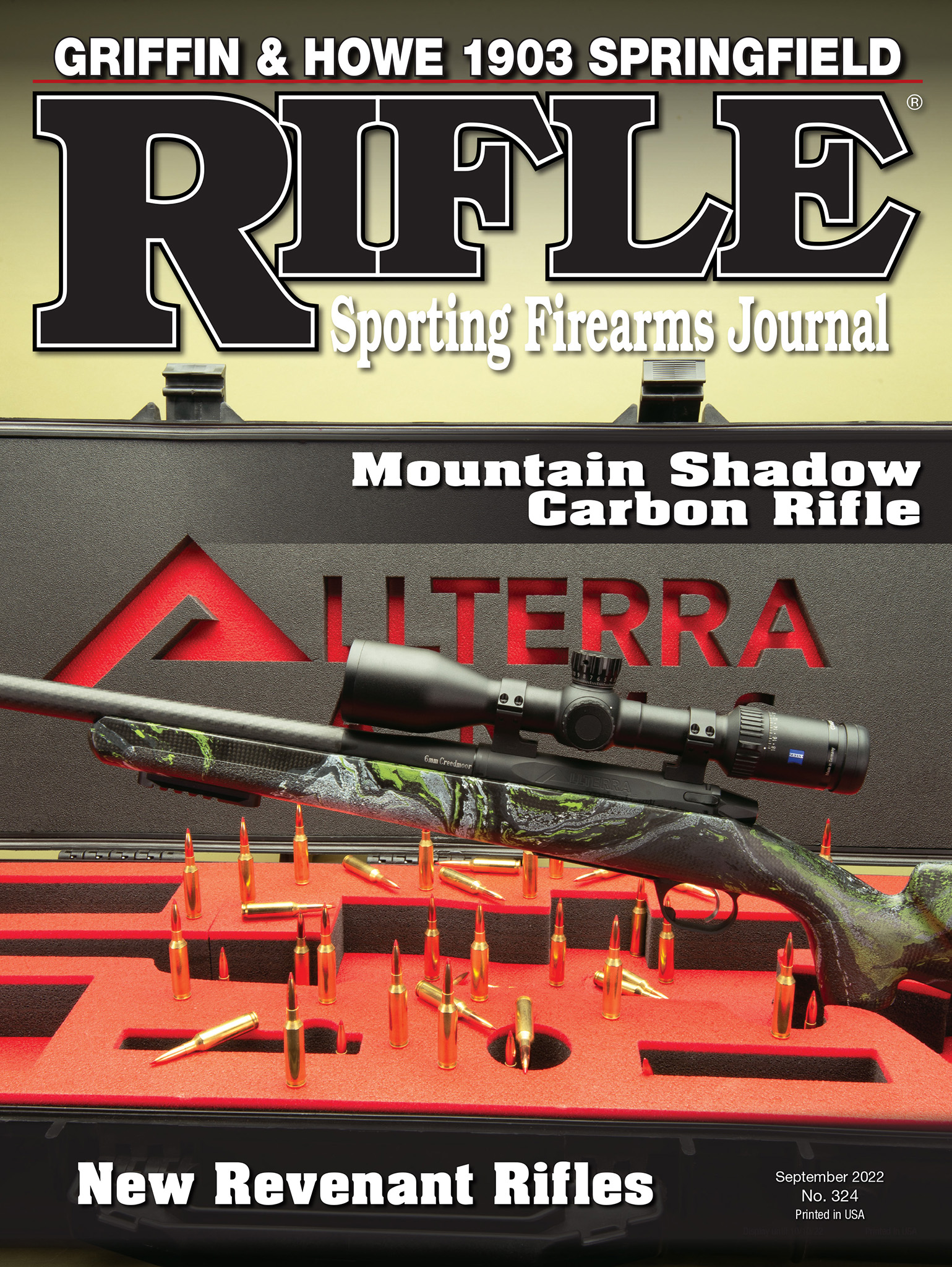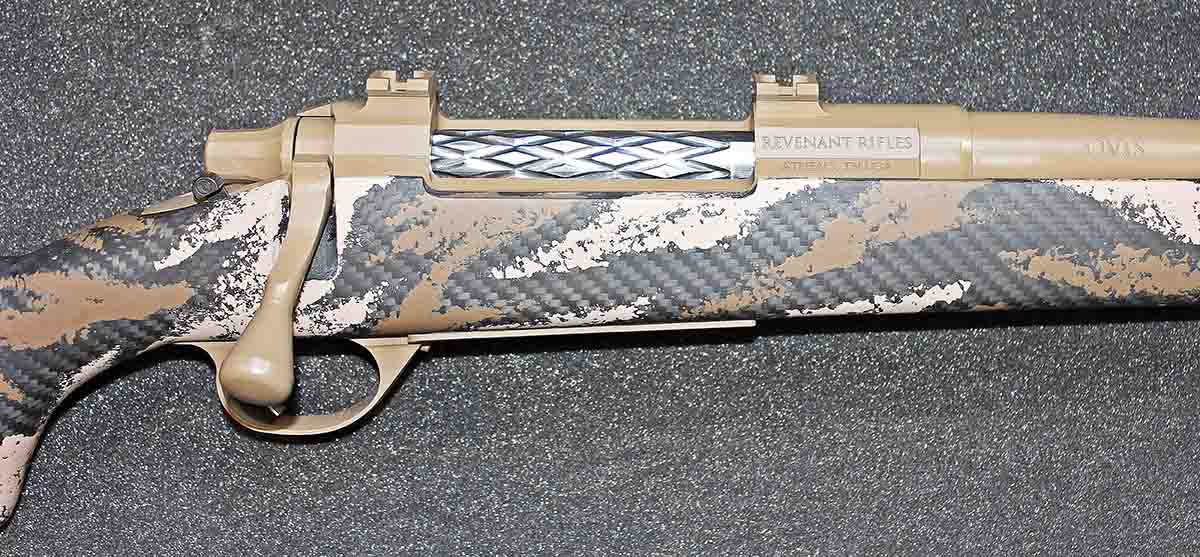
Features include a hand-painted, carbon-fiber stock, a skeletonized scope mount, a two-position safety, a jeweled bolt with tactical knob and an optional CERAKOTE Elite finish.
When the call came from Justin Perry at Knight Rifles, I naturally assumed he wanted to discuss the company’s new .40 caliber muzzleloader. I was wrong.
“Do you hunt much with centerfire rifles?” Justin inquired. “Not much… but I do have two really good rifle tags this fall that I drew,” I replied. “What’s up?” Justin continued: “We just started building custom centerfire rifles, and would love to have you involved. You can design one from our list of components, and we’ll build it for you to hunt with this season.” Now this was an offer that would be hard to refuse! After checking out details on the new Revenant Rifles website (revenant customrifles.com), I was all-in.
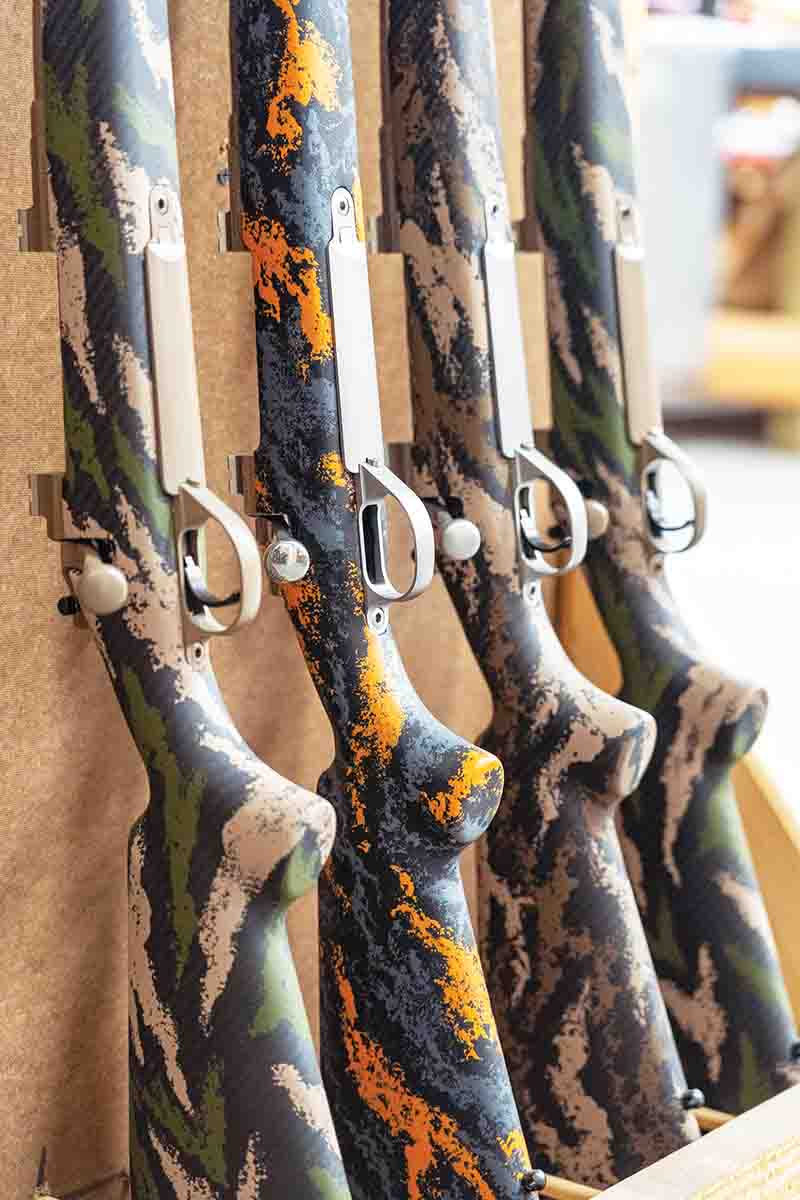
A rack of Ovis models from the new Revenant Rifles in Athens, Tennessee.
Most hunters are familiar with Tony Knight’s reinvention of the inline muzzleloader in the mid-1980s, and the 20-plus years of innovation and market segment growth that he ignited. Most shooters are likely unfamiliar, however, with the Beene brothers – Jeff and Jones – and their resuscitation of the floundering company 10-plus years ago, through introduction of some new, high-quality, front-loading models made in Athens, Tennessee. I questioned the timing of starting a new venture like this in the middle of a worldwide pandemic. Jeff related that he often fell asleep reading
Gun Digest as a kid, dreaming of the day he might build his own custom rifles. Despite the challenging circumstances, that day arrived.
While hunting around the world, Jeff observed an all-too-common problem – the inability of hunters to shoot ultra-light magnum rifles accurately. This has become the bane of elk and sheep outfitters, as well as the stimulus for Revenant Rifles’ mantra to build a “mid-weight, highly-accurate, reliable pack rifle.” The initial model is appropriately named “Ovis” – the genus for wild sheep. After hunting with this rifle, packing it through exceptionally rugged terrain, and rigorously testing it for three full months, I believe the new company has achieved its objective, with notable style and beauty.
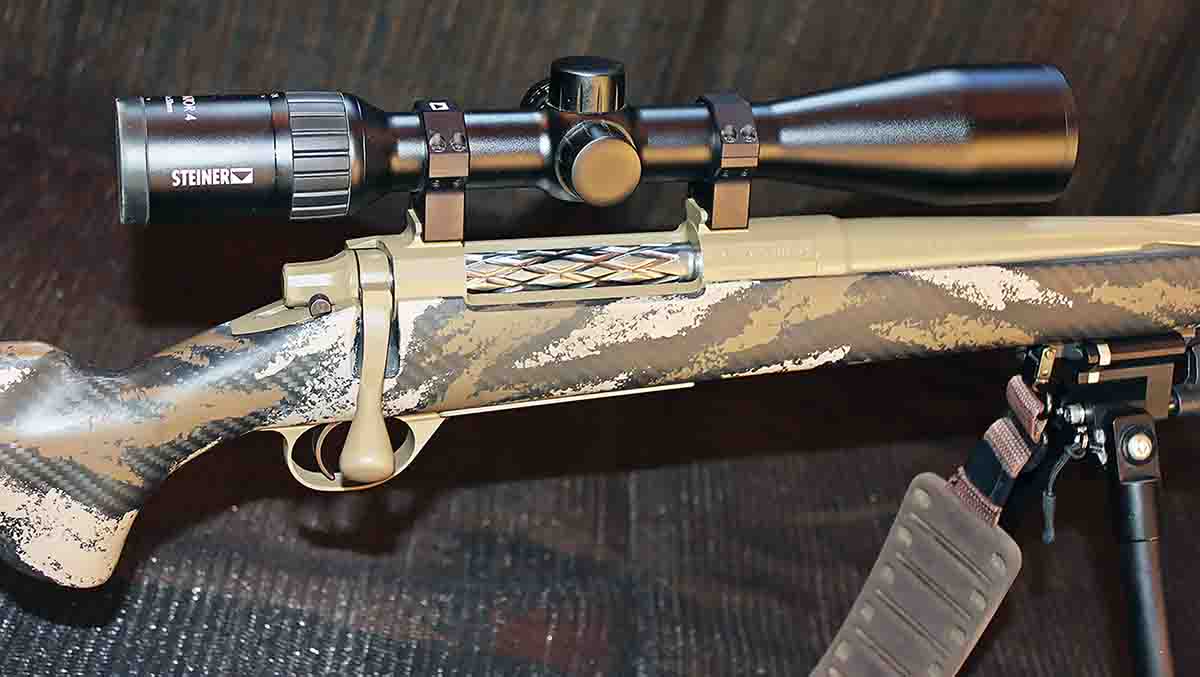
An Ovis #13 sports a new Steiner Predator 4 6-24x 50mm scope.
The Ovis rifle is available in four magnum calibers, .28, .30 and .33 Nosler, and .300 Winchester Magnum. Volumes have been written about these cartridges, and the company guarantees sub-MOA accuracy with each. Jeff explained that in addition to the .30-caliber Winchester standard, they favored the magnum Nosler calibers for their power and flat-shooting accuracy, in a lineup designed to appeal to sheep, elk, bear and hog hunters. I chose .28 Nosler – before researching availability of factory ammunition – and the construction of my test rifle began the second week in July last year.
This rifle is built around a Deviant action from Defiance Machine in Montana. Popular among custom rifle builders for superior accuracy, its receiver is machined from a single piece of aircraft-certified 416 steel, pre-hardened prior to machining. The bolt is likewise machined from a single billet of aircraft-certified 4340 chrome moly, and threaded for interchangeable knobs. I chose the standard length tactical knob from options that include ball, tear drop and two longer tactical versions. Other features include an integral, skeletonized 20-MOA scope mount, integral recoil lug and magazine dump button positioned at front of trigger guard.
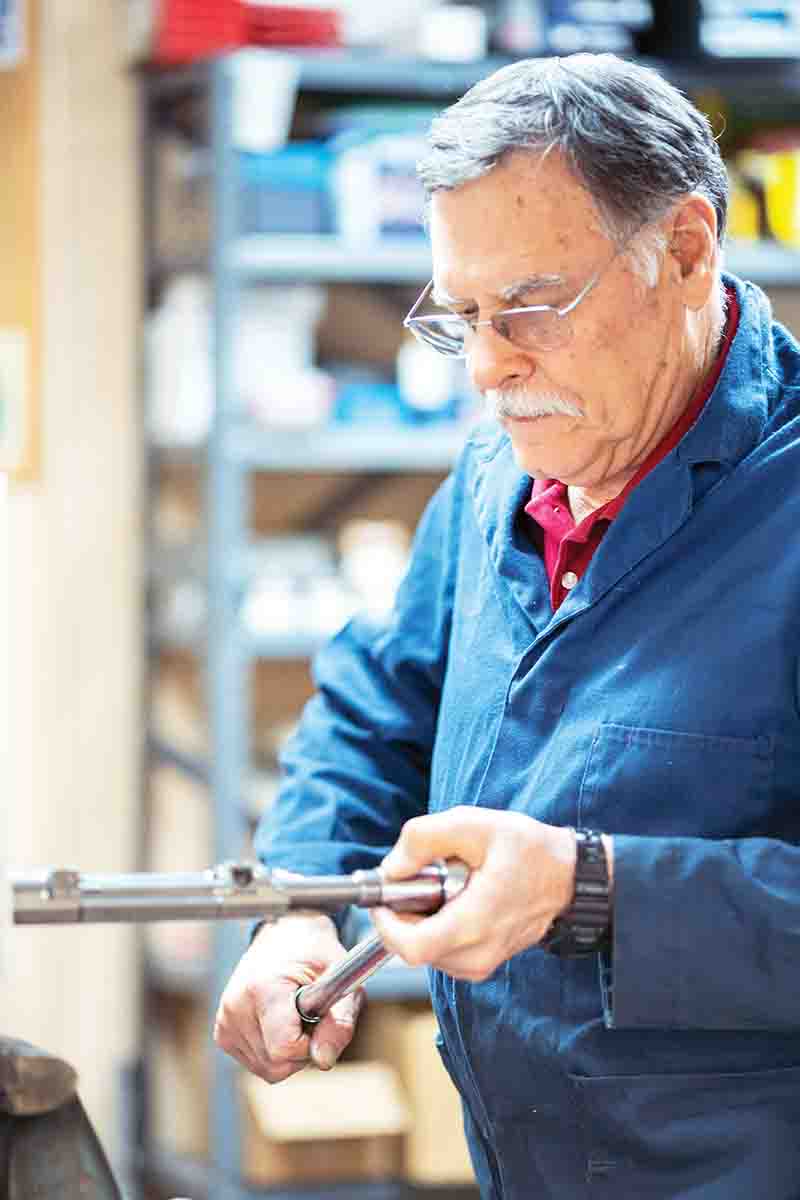
Revenant Rifles engineer, Larry Nelson, assembles an action for the Ovis rifle.
Barrel options include choices from top manufacturers including Shaw, Douglas and Bartlein. All barrels are 26 inches in length and made from premium-grade 416R stainless steel, with a target crown. Each is hand-lapped in-house to ensure the best accuracy. The medium/heavy contour sporter barrels from Shaw feature R5 button rifling and are available in smooth/tapered and helical-fluted versions. Handcrafted Douglas barrels feature a proprietary gear-driven, pushed and guided-button rifling process to ensure precise tolerances. Bartlein barrels feature single point cut-style rifling – no button rifling and no broach cutting. Barrels are prelapped/honed before rifling and finish lapped after rifling for superior accuracy. Due to the scarcity of .28 Nosler factory ammunition at the time in retail channels and the comparatively short time I would have to break in the new rifle before hunting, I chose the fluted Shaw barrel with a 1:9 twist. Cooling properties and aesthetics were additional considerations in making this choice.
Speaking of aesthetics, stock options are a literal kaleidoscope of colors and designs. More than 20 distinctive patterns are available, from basic black monotone to strikingly colorful “look-at-me” camouflage, and each 100 percent carbon-fiber stock is hand-painted by artists at AG Composites in Alabama. Built with an aluminum block inside the forend – from the tip of the stock to 1 inch in front of the recoil lug, this can be drilled and tapped for different rail types. In addition to aluminum pillars, a 1-inch Pachmayr Decelerator recoil pad and sling swivels are installed. Cured at temperatures up to 250 degrees, these stocks are rigid and durable. They are also light, weighing just 26 ounces, with a 30.8 inch overall length and 13.5 inch LOP.
My first choice for stock color was a Tan Widow Web design. Unfortunately, the quoted delivery of 10 to 12 weeks would not leave enough time to ready the rifle for hunting. Thus, I opted for the Carbon Desert Night Camo pattern and was not disappointed.
I also chose to have metal parts – receiver, barrel, muzzle brake and bolt handle – coated with CERAKOTE Elite finish for durability, in Flat Dark Earth color which nicely compliments the stock colors, and makes a striking visual presentation.
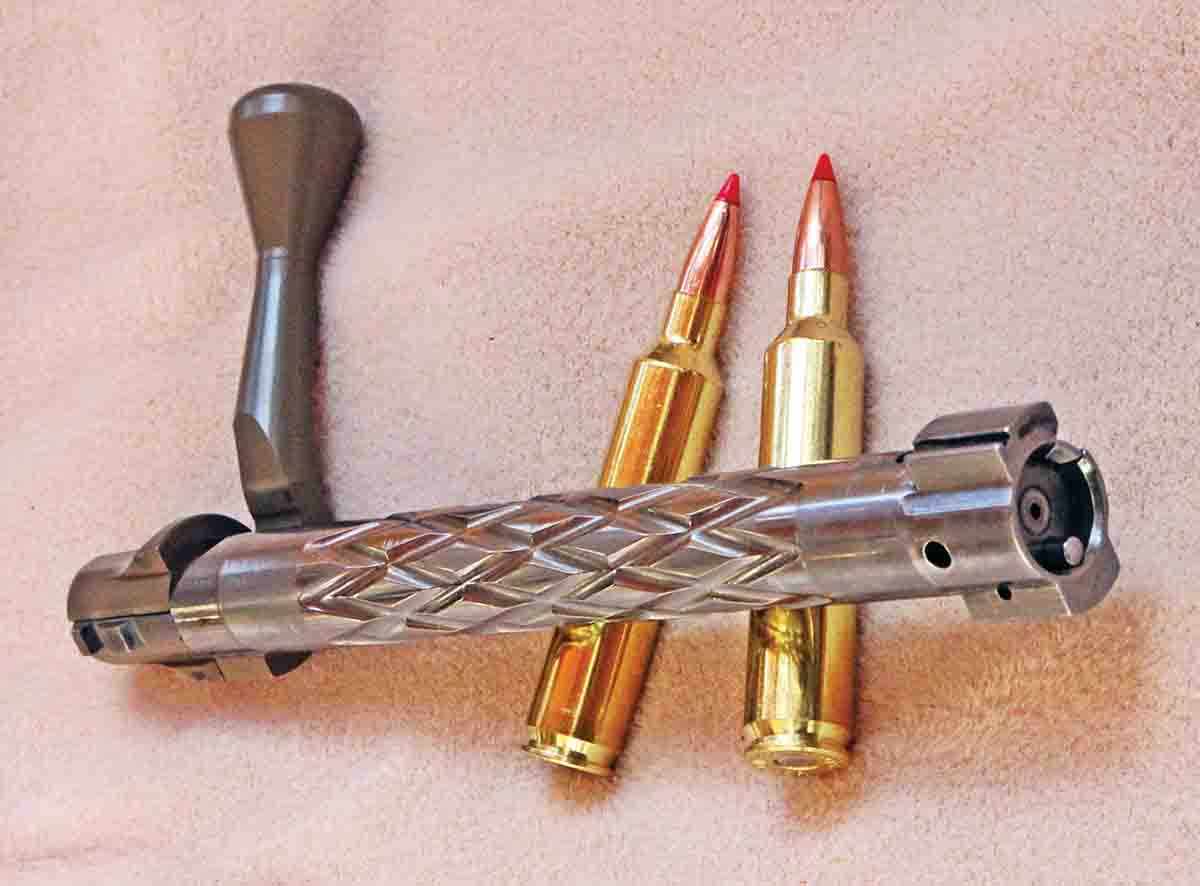
The bolt features beautiful diamond-pattern jeweling, a tactical knob and CERAKOTE Elite finish.
Trigger options include two from Timney: the HIT model features the new sear engagement adjustment lock design (SEAL’d) that is adjustable for pull weight (down to half pound) and overtravel, and a Hunter Elite model designed to “elevate accuracy” in custom rifles.
My Ovis test rifle was fitted with the Hunter Elite trigger. Its pull weight averaged 2.7 pounds on arrival, and I adjusted it down to 2.4 pounds to match other rifles in my safe, prior to test firing.
The final option – muzzle brake design – received serious consideration. Each of my hunting rifles is fitted with a muzzle brake, regardless of the caliber. I believe this is the single most important aid to shooters of magnum calibers for achieving their optimal accuracy. Revenant offers three different brakes of its own design: (1) conventional porting, where gasses are vented to the side, (2) multi-port, and (3) fin-brake, where gasses are directed rearward for maximum recoil reduction. While the fin-brake design requires timing to the barrel, the multi-port design does not. Thus, with time and ammunition supply considerations, I chose the multi-port brake.
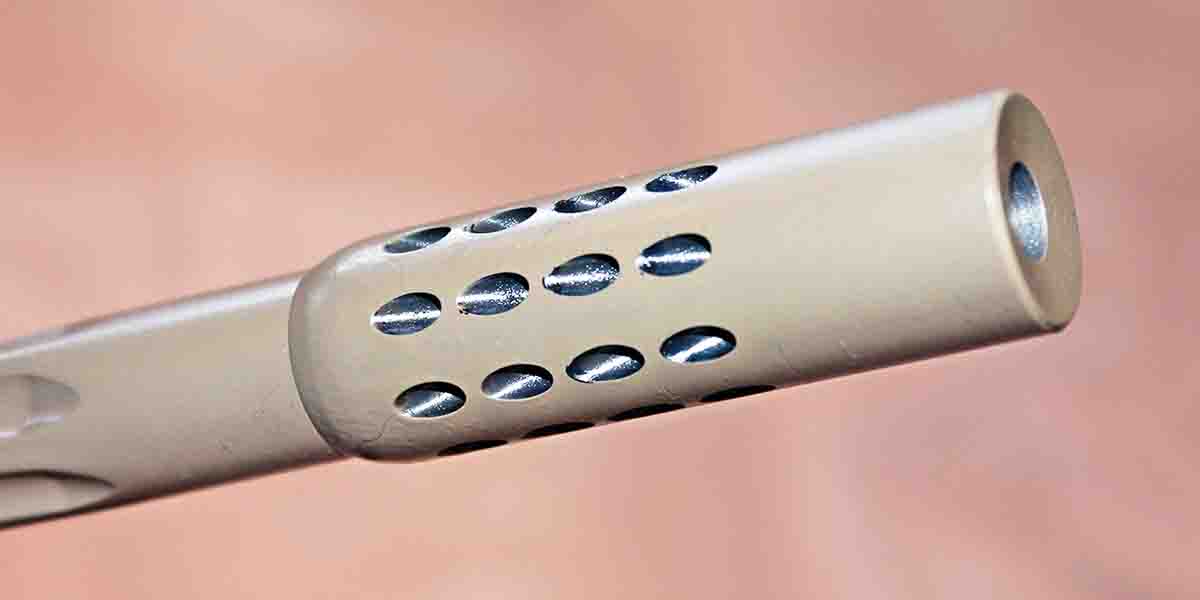
The multi-port muzzle brake was machined in-house.
The four-week estimated completion time turned into eight weeks, primarily due to delivery issues with the vendor contracted by Revenant to manufacture its muzzle brakes. Thus, to avoid additional delay, Revenant Rifles engineer Larry Nelson personally machined the multi-port brake to complete serial No. 13. He test-fired the rifle with factory loadings from Nosler and Browning and validated its sub-MOA accuracy before shipping it to Arizona. It arrived packed in a beautiful, waterproof SKB rifle case – a nice perk that is included with each Revenant Rifle purchase.
When the rifle arrived, I had just a single box of ammunition in .28 Nosler. With less than three weeks remaining before the first hunt, I contacted friends and industry colleagues with an SOS. Nosler came to the rescue, providing a few boxes in different loadings, and I ultimately obtained additional ammunition manufactured by HSM, Browning and Federal. After installing a brand new Steiner Predator 4 6-24x 50mm scope on a set of its H-Series Light Weight rings, I was off to the range to dial-in the Ovis.
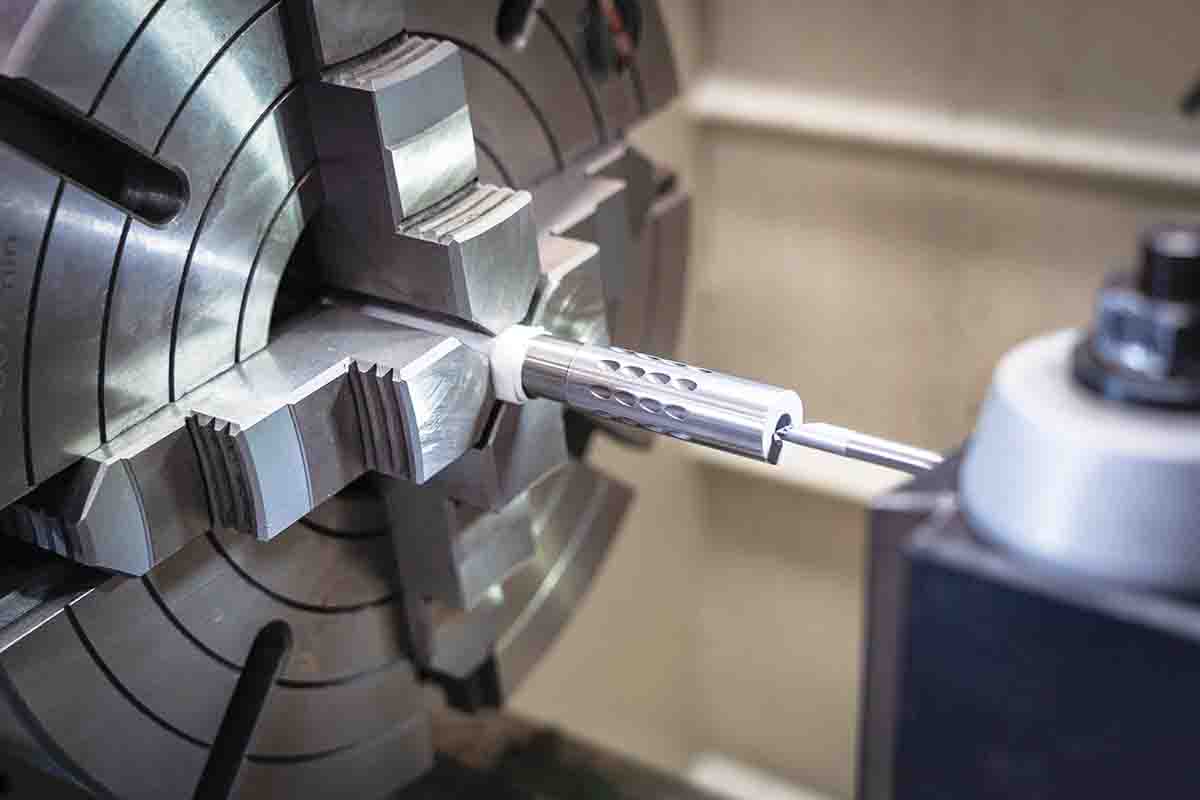
Machining the multi-port muzzle brake.
My first shot with the new rifle was a rush… literally. The rearward blast of exhaust gasses from the multi-port muzzle brake was considerably more than I was expecting! Nevertheless, it required just three shots to strike the first bullseye at 100 yards with the Nosler 160-grain Ballistic Tip load. Now prepared for the detonation aftermath, I noticed there was very little muzzle lift on subsequent shots, and remarkably light recoil considering the power of the magnum cartridge and 7-pound weight of the rifle. Now I’ll be the first to admit that I’m not a great bench shooter – something to do with patience I’m told – but I had no problem shooting sub-MOA 5-shot groups at 100 yards. Despite its overall length of 483⁄4 inches, the rifle is nicely balanced and shoulders perfectly. The trigger is crisp with no creep, and the action cycles like butter. I left that first range session feeling that Revenant had indeed accomplished the stated objective of producing an accurate and light recoiling magnum hunting rifle.
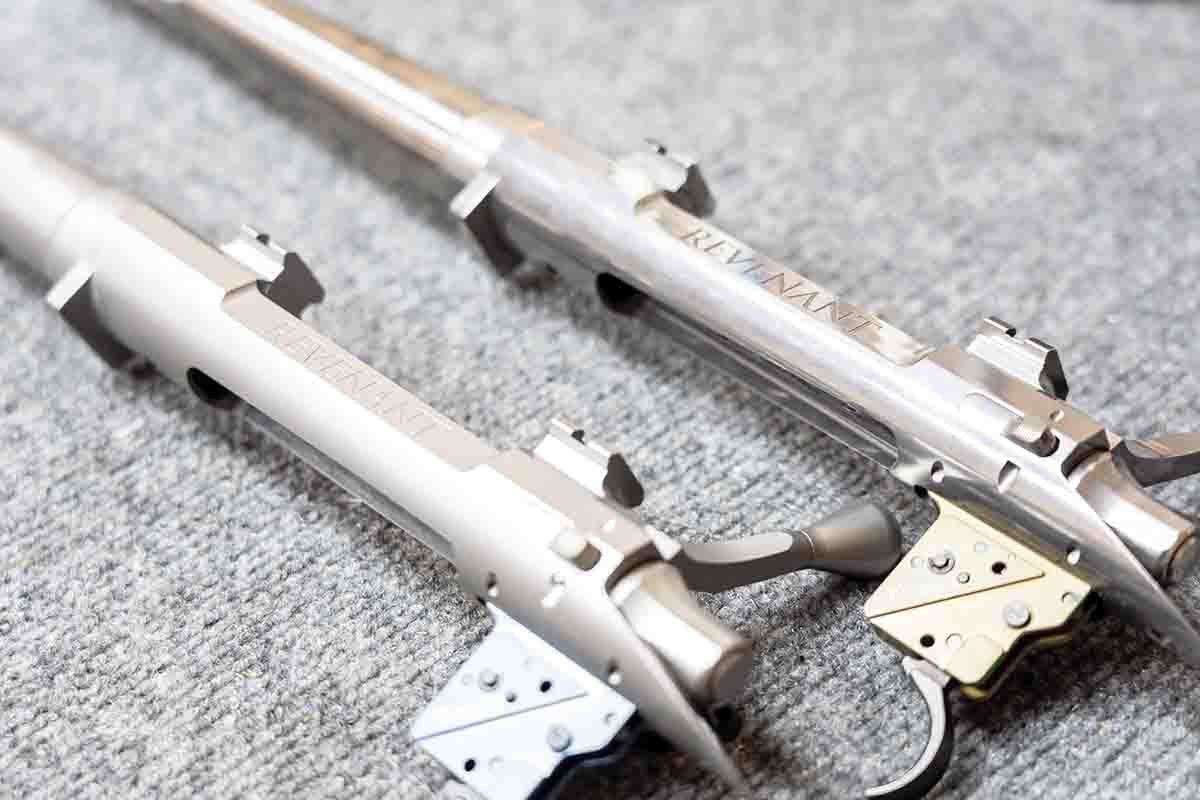
The action, bolt, barrel and trigger assemblies for Revenant Rifles’ Ovis model.
Multiple groups were fired at the next range session with seven different factory loads. Prior to each 5-shot group, the rifle barrel was treated with Hoppes Copper Terminator and thoroughly cleaned with brushing and multiple patching before applying a thin film of oil, and then firing a single fouling shot. With a one-minute minimum interval, each shot was chronographed and each group was measured for accuracy. Four of the seven factory loads produced sub-MOA groupings. The tightest groups were printed by HSM Trophy Gold with Berger 168-grain HPBT bullets, averaging just .4375 inch. These were followed by two Nosler loads: the 160-grain Ballistic Tip and the 175-grain Trophy Grade AccuBond Long Range – at just over a half-inch each (.6250 and .6875, respectively). Through the first 100 rounds fired, it appears the Ovis rifle prefers the lower velocity (3,000/3,100 feet per second) rounds and heavier bullets (160-175 grains) in the factory loads tested.
Prepping the rifle for hunting, I added a claw-type shoulder sling and forend mounted bipod in addition to the new Steiner Predator 4 6-24x 50mm scope and rings. The versatile Hatch Outwest Precision bipod weighs 19.3 ounces and adjusts from 7 to 27 inches. It attaches to a 2-inch Picatinny rail and can be quickly removed so I don’t have to pack the rifle with the bipod attached. The 6-24x 50mm riflescope from Steiner’s new Predator 4 line is lightweight (23.5 ounces) with outstanding optical clarity and military-grade ruggedness and durability. It features an illuminated second focal plane E3 reticle designed for hunters, with 5- and 10-mph crosswind reference marks as well as Bullet Drop Compensation (BDC) holdover marks on the crosshairs. The scope has 11 brightness levels – 5 daytime and 6 nighttime settings.
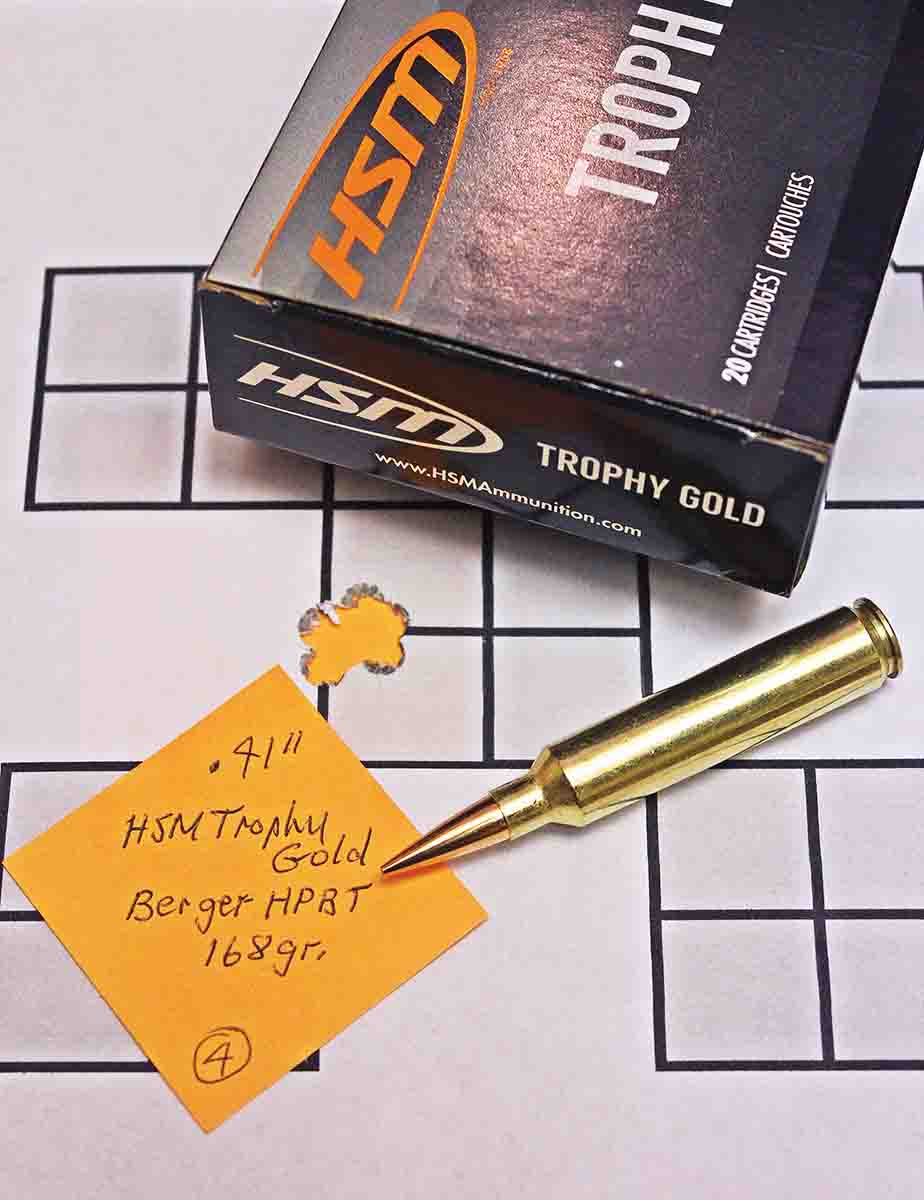
The tightest group with factory ammunition was .41 inch using HSM Trophy Gold with Berger’s 168-grain HPBT bullets.
In early October, I headed for Wyoming to hunt pronghorn with my good friends Linda Wainen from Pennsylvania and George Pinkham from New York. Neither had previously hunted pronghorns, and Linda had never taken a big-game animal with a rifle. Thus, I packed two extra rifles – .243 Winchester and 7mm-08 Remington – anticipating that Linda might prefer one of the lighter recoiling models to the more potent .28 Nosler. Nooo! After shooting all three the first morning, the young lady of slight build proclaimed she would take her pronghorn with the Ovis… and she did just that. After a long stalk, while sitting in the open prairie surrounded by intense rutting activity, she dropped her chosen buck in its tracks at 107 yards, splitting the top of its heart. George filled his tag the following day with a single shot from 177 yards. The Ovis #13 was 2 for 2, and now it was my turn. After a ¾-mile blind stalk, crawling the last 100 yards through sparse cactus-laced cover, I was still 400 yards from the group of a dozen does with a beautiful tending buck. My hope of getting closer ended quickly when they caught my scent. Winds were gusting from an approaching snowstorm that would blanket the Casper area with 16 inches overnight, so it was now or never as the hunt area could be rendered inaccessible the following day. With bipod legs extended and scope cranked up to 24x, I sat watching the fidgety pronghorn while calculating windage and bullet drop. The does finally moved away, but the buck remained in a statuesque pose. When I touched the trigger a Nosler 160-grain BT effectively ended a very successful first hunt.
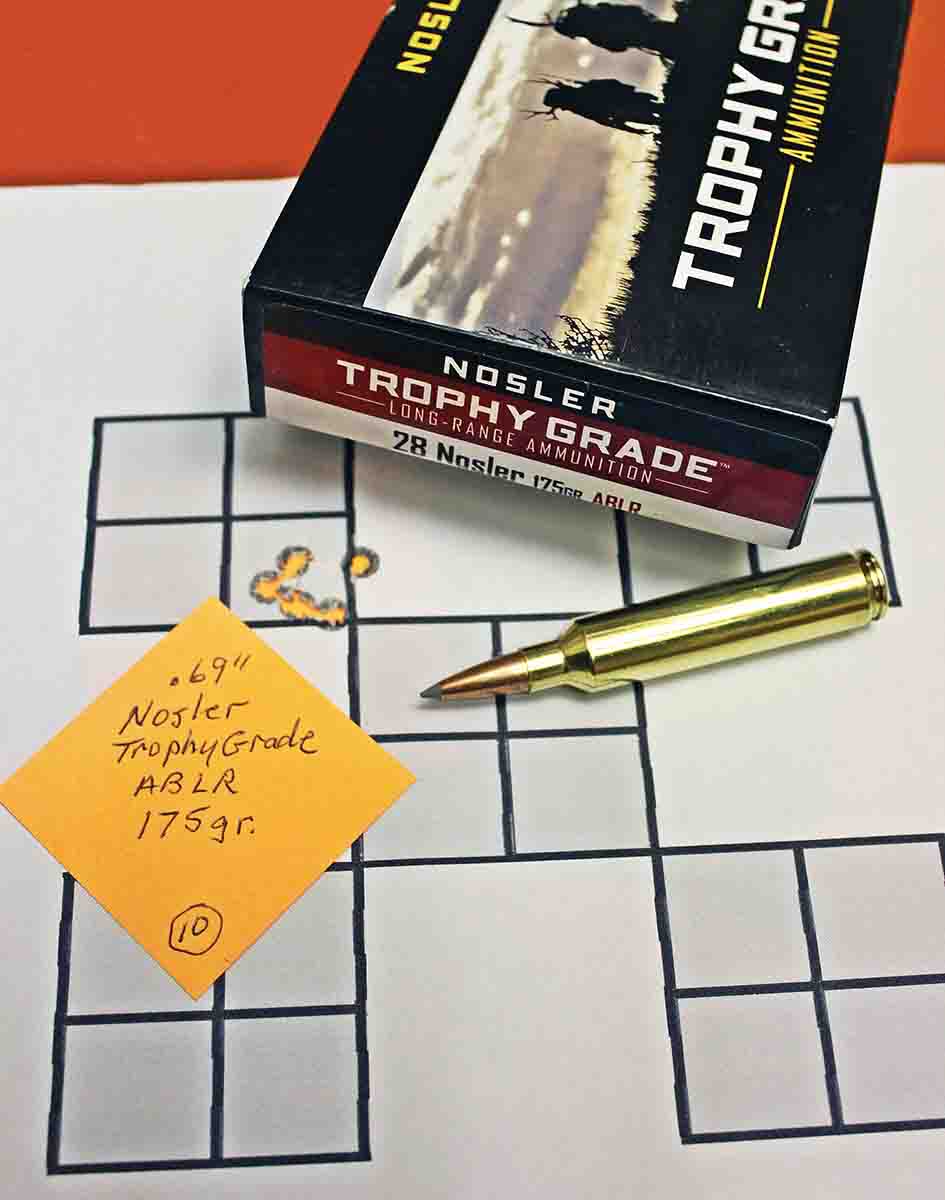
A representative group with Nosler Trophy Grade, 175-grain ABLR bullets at .69 inch.
For me, the true test of a hunting rifle is how it performs in the field. So far, through several hunts in diverse terrain and weather, the new Ovis rifle has delivered outstanding performance with factory ammunition. I look forward to developing handloads that will undoubtedly unlock the tack-driving potential of this first offering from Revenant Rifles.










.jpg)


